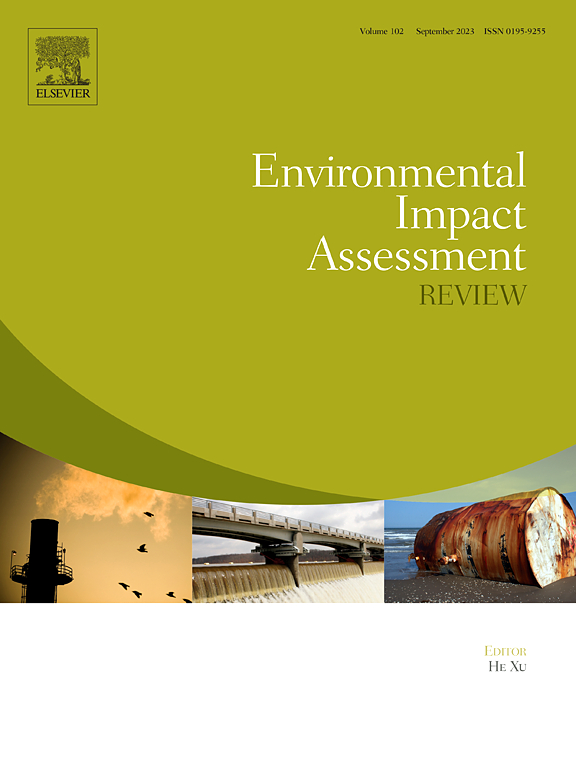不合规计量导致国家碳关税的重大误估:方法与中国回顾性案例研究
IF 11.2
1区 社会学
Q1 ENVIRONMENTAL STUDIES
引用次数: 0
摘要
欧盟碳边界调整机制(CBAM)是全球首个实施的碳关税政策。目前CBAM的影响评估面临不合规问题,即碳关税计量没有严格按照CBAM的规定进行,这可能会动摇可信影响评估的基础。然而,不合规的测量对国家碳关税估算的影响仍然无法量化。根据CBAM的规定,我们确定了四个关键的碳关税决定因素:商品范围、嵌入式排放范围、温室气体(GHG)组合和欧盟的碳价格。我们还回顾了现有文献中普遍存在的不合规测量实践。通过构建144个场景,将这四个因素的常用设置结合起来,我们从行业和整体层面对欧盟的关键贸易伙伴之一中国进行了回顾性案例分析。合规计算显示,2022年中国对欧盟出口的碳关税为6.144亿欧元,占相应贸易额的3.5%。情景分析表明,不合规的测量可能会错误估计中国的总体碳关税成本和从价碳关税税率,偏差范围分别从低估74.4%到高估382.7%,从低估63.5%到高估392.2%。这些变化突出了政策改变后的潜在未来影响。虽然行业差异确实存在,但我们发现造成误估的最重要因素是商品范围、排放范围和碳价格,而温室气体组合的影响相对较小。本研究强调了合规碳关税方法的必要性,概述了提高测量精度的优先事项以及对基于证据的政策设计的影响。本文章由计算机程序翻译,如有差异,请以英文原文为准。
Non-compliant measurement leads to significant misestimation in national carbon tariff: Methodology and a retrospective case study of China
The EU's Carbon Border Adjustment Mechanism (CBAM) is the first global carbon tariff policy to be implemented. Current impact assessments of CBAM face non-compliance issues, namely, carbon tariff measurements do not strictly follow CBAM regulations, which may shake the foundation for credible impact assessment. However, the effects of non-compliant measurements on national carbon tariff estimates remain unquantified. In line with CBAM's provisions, we identify four key carbon tariff determinants: commodity scope, embedded emission scope, greenhouse gas (GHG) portfolio, and the EU's carbon price. We also review prevalent non-compliant measurement practices in the existing literature. By constructing 144 scenarios that combine the commonly employed settings for these four factors, we conducted a retrospective case analysis of China—one of the EU's pivotal trading partners—both at the sectoral and overall level. The compliant calculations reveal a carbon tariff of 614.4 million euros levied on China's exports to the EU in 2022, accounting for 3.5 % of the corresponding trade volume. Scenario analysis reveals that non-compliant measurements could misestimate China's overall carbon tariff costs and ad valorem carbon tariff rates, with deviations ranging from a 74.4 % underestimation to a 382.7 % overestimation, and from a 63.5 % underestimation to a 392.2 % overestimation, respectively. These variations highlight the potential future impact after policy alterations. While sectoral variations do exist, we find that the most significant contributors to misestimations are commodity scope, emission scope, and carbon price, with the GHG portfolio having a relatively minor effect. This research underscores the necessity of compliant carbon tariff methodology and outlines prioritization for enhanced measurement precision and implications for evidence-based policy design.
求助全文
通过发布文献求助,成功后即可免费获取论文全文。
去求助
来源期刊

Environmental Impact Assessment Review
ENVIRONMENTAL STUDIES-
CiteScore
12.60
自引率
10.10%
发文量
200
审稿时长
33 days
期刊介绍:
Environmental Impact Assessment Review is an interdisciplinary journal that serves a global audience of practitioners, policymakers, and academics involved in assessing the environmental impact of policies, projects, processes, and products. The journal focuses on innovative theory and practice in environmental impact assessment (EIA). Papers are expected to present innovative ideas, be topical, and coherent. The journal emphasizes concepts, methods, techniques, approaches, and systems related to EIA theory and practice.
 求助内容:
求助内容: 应助结果提醒方式:
应助结果提醒方式:


